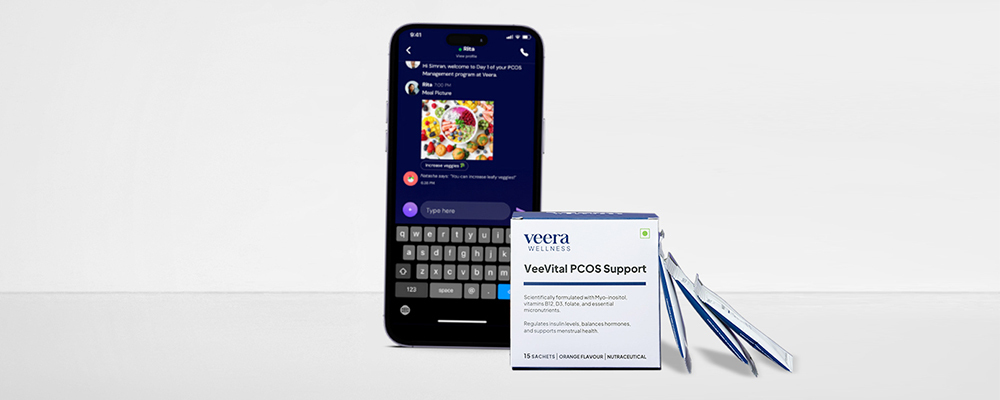Anxiety disorders are all too common among women but often left untreated. Here is how to get diagnosed if you think you have anxiety and what you can do to put the brakes on your fears.
Anxiety disorders are one of the most common mental illnesses in India, affecting one in twenty people, with women being more likely to be afflicted than men. Anxiety disorder is a condition characterized by extreme or inappropriate fear or worry. It could range from fears about attending a party, uncontrollable stress about a presentation at work, to general feelings of extreme worry. Anxiety can also manifest as physical symptoms, such as breathlessness, chest tightness, palpitations, dryness of mouth, excessive sweating, or a choking sensation. These symptoms, among others, maybe a sign that you have an anxiety disorder, especially if these feelings begin to impact your day-to-day functioning.
If you suspect you might have an anxiety disorder, the first step to getting diagnosed is to meet with a mental health professional – it could be a psychologist, psychiatrist or counselor. Below is some more information about two of the most common types of anxiety disorders: social anxiety disorder and generalised anxiety disorder.
Differentiating Between Social Anxiety Disorder and General Anxiety Disorder
Social anxiety disorder is characterized by a constant fear of one or more social situations, according to the Diagnostic and Statistical Manual of Mental Disorders (DSM, the manual used by health professionals to diagnose mental health conditions). Some examples of this include anxiety about attending a friend’s birthday party, and an unbearable unease that you may encounter a lot of unknown people. This kind of fear can often result in panic attacks in public and avoiding social situations.
Generalised anxiety disorder (GAD) on the other hand, is characterized by persistent and excessive anxiety about many different aspects of their daily lives, beyond social situations. Fatigue and muscle tension are the non-psychiatric symptoms of GAD.
In either case, if you have been experiencing symptoms for more than six months a diagnosis of anxiety disorder can be made.

Diagnosing General Anxiety Disorder
According to the DSM-5 criteria (the manual used by mental health professionals), generalised anxiety disorder is characterized by:
- Excessive anxiety or worry about various events or activities in life for more than six months
- Difficulty controlling the worry
- More than three months of associated symptoms such as restlessness, fatigue, impaired concentration, irritability, and insomnia
- Experiencing symptoms that are not caused by substance abuse, or another mental disorder or medical condition
- Symptoms that cause significant social or occupational dysfunction
What Is The Treatment for Anxiety?
If you think that you suffer from an anxiety disorder, talk to a mental health professional who can clinically diagnose you. Your doctor, like a psychiatrist, will first determine the severity of your symptoms. Then you will work towards a treatment plan. Psychotherapy is often the first step in any treatment plan, especially for mild and moderate anxiety. In psychotherapy, your therapist or psychologist will hold sessions with you to talk through and analyze your issues. They will help you address maladaptive cognitions that could be contributing to your feelings and help you gain better insight into what troubles you.
When symptoms persist, a medication regiment may be added to your treatment plan. Medications can affect different people in different ways, so always have open conversations with your therapist or psychologist about your goals for treatment.
Medications:
SSRIs (selective serotonin reuptake inhibitors) are the most common medications prescribed for anxiety. They work by increasing the amount of serotonin, also known as the feel-good hormone, in the brain and work to regulate your mood. Your doctor may even recommend benzodiazepines for short term use.
The goal of medication is to achieve symptomatic relief and can help ease anxiety symptoms, including feelings of irritability, hopelessness, and agitation. It may take your doctor multiple sessions to understand which drugs work best for you and some trial-and-error of trying different medications, so stay committed to your consultations for best results.
Stay healthy, stay brave Veera ladies!
Also reviewed by Rohini Bagrodia, MA, Ph.D. Candidate, Clinical Psychology.
References:[1] American Psychiatric Association. (2013). Diagnostic and statistical manual of mental disorders (5th ed.). Arlington, VA: Author.[2] Glasofer, D.R. (2020, August 15). The Difference Between GAD and Social Anxiety Disorder. https://www.verywellmind.com/difference-between-gad-and-social-anxiety-disorder-1393009[3] Cuijpers, P., Sijbrandij, M., Koole, S., Huibers, M., Berking, M., & Andersson, G. (2014). Psychological treatment of generalized anxiety disorder: a meta-analysis. Clinical psychology review, 34(2), 130-140.[4] Mayo-Wilson, E., Dias, S., Mavranezouli, I., Kew, K., Clark, D. M., Ades, A. E., & Pilling, S. (2014). Psychological and pharmacological interventions for social anxiety disorder in adults: a systematic review and network meta-analysis. The Lancet Psychiatry, 1(5), 368-376.
Disclaimer: Content on Veera is provided for informational purposes only and is not intended as medical advice, or as a substitute for medical advice given by a physician.


















